Specialty Blended Filters
An air filtration system is the preferred way to eliminate harmful gases, fumes and undesired odors from the environment and application. However, standard particle filters do not hold the necessary capabilities to remove harmful gaseous pollutants.
Our custom specialty blended filters are highly efficient at removing hazardous fumes, odors, and severely toxic chemicals. By utilizing activated carbon as the host material, we impregnate the carbon with high-grade proprietary reagents to achieve superior results for the adsorption of airborne gasses.
It is imperative to remember that due to the surface area of the activated carbon that airflow can become compromised in some applications.
- Acid Gas Removal
- Ammonia Removal from Air
- Aldehyde Removal
Acid Gas Removal
High-grade impregnated activated carbon for acid gas removal. Our acid gas removal process separates highly toxic CO2 and sometimes deadly H2S acid gases from natural gas streams through the adsorption process by utilizing a custom specialty blended filter.
The proprietary reagents used to impregnate this activated carbon show a high efficiency in the removal of airborne acid gases, and contain no heavy metals, such as, copper, lead, or mercury, that could lead to further hazards or harm.
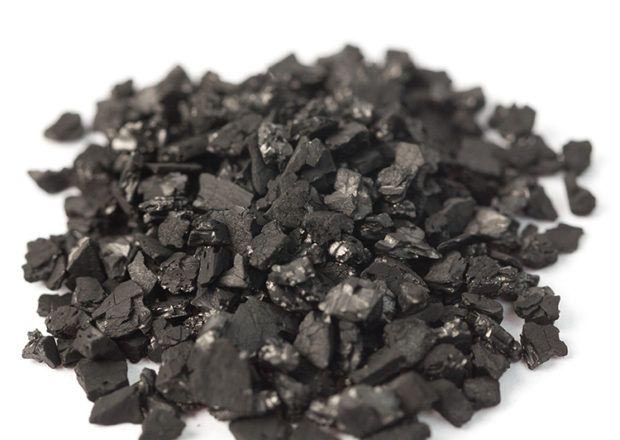
Typical Properties |
Test Method |
|
| Carbon Base | Granular coconut-shell | |
| Activity, CCI4* | 60, 70, or 85% minimum | ASTM D3467 |
| Hardness, ball-pan | 95 minimum | ASTM D3802 |
| Ash content | 5% maximum | ASTM D2866 |
| Apparent density | 0.45 to 0.58 g/ml | ASTM D2854 |
| Surface area* | 1000 m2/g minimum | N2 BET method |
| Moisture content, as packed | 8% to 13% | ASTM D2867 |
* Indicates properties of activated carbon prior to impregnation
| Standard mesh size (US Sieve) | Test method | |
| Molecular Products Inc. designation | Particle size | ASTM D2862 |
| G1 | 4 x 8 | ASTM D2862 |
| G2 | 6 x 12 | ASTM D2862 |
| G3 | 8 x 16 | ASTM D2862 |
| G5 | 20 x 50 | ASTM D2862 |
| G12 | 12 x 20 | ASTM D2862 |
Ammonia Removal from Air
High-grade impregnated activated carbon for ammonia removal from air and amine gas treating. The ammonia removal from air process is specifically in place for use in critical applications that deal with elements that would directly affect the respiratory system.
The proprietary reagents used to impregnate this activated carbon show a high efficiency in the removal of ammonia from air and amine gas treating, and contain no heavy metals, such as, copper, lead, or mercury, that could lead to further hazards or harm.
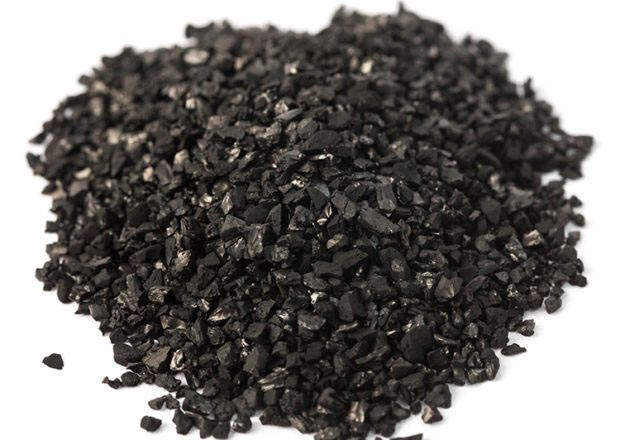
Typical Properties |
Test Method |
|
| Carbon Base | Granular coconut-shell | |
| Activity, CCI4* | 60, 70, or 85% minimum | ASTM D3467 |
| Hardness, ball-pan | 95 minimum | ASTM D3802 |
| Ash content | 5% maximum | ASTM D2866 |
| Apparent density | 0.57 to 0.64 g/ml | ASTM D2854 |
| Surface area* | 1000 m2/g minimum | N2 BET method |
| Moisture content, as packed | 9% to 13% | ASTM D2867 |
* Indicates properties of activated carbon prior to impregnation
| Standard mesh size (US Sieve) | Test method | |
| Molecular Products Inc. designation | Particle size | ASTM D2862 |
| G1 | 4 x 8 | ASTM D2862 |
| G2 | 6 x 12 | ASTM D2862 |
| G3 | 8 x 16 | ASTM D2862 |
| G5 | 20 x 50 | ASTM D2862 |
| G12 | 12 x 20 | ASTM D2862 |
Mercury Removal
High-grade impregnated activated carbon for mercury removal. One of the methods of removing mercury vapor from gases and air streams is to use high efficiency adsorption filters that do not allow the vapor to build and dissolve, recreating an emission. Therefore, it is critical to ensure that the carbon used in the application is regarded as “high-grade” and holds a minimum hardness (ball pan) efficiency of 95%.
The proprietary reagents used to impregnate this activated carbon show a high efficiency in the removal of mercury vapors, and contain no heavy metals, such as, copper, lead, or mercury, that could lead to further hazards or harm.
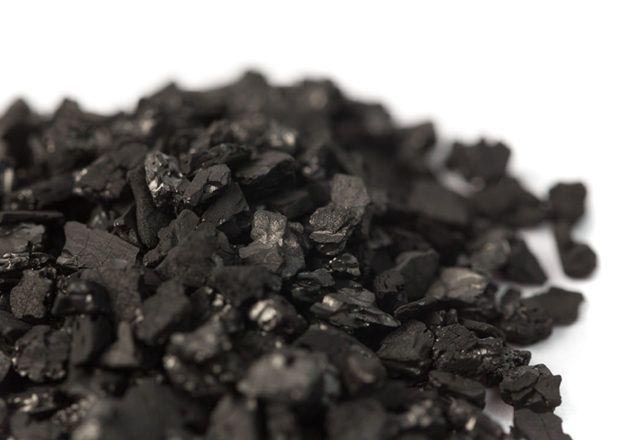
Typical Properties |
Test Method |
|
| Carbon Base | Granular coconut-shell | |
| Activity, CCI4* | 60, 70, or 85% minimum | ASTM D3467 |
| Hardness, ball-pan | 95 minimum | ASTM D3802 |
| Ash content | 5% maximum | ASTM D2866 |
| Apparent density | 0.47 to 0.5 g/ml | ASTM D2854 |
| Surface area* | 1000 m2/g minimum | N2 BET method |
| Moisture content, as packed | 4% to 8% | ASTM D2867 |
* Indicates properties of activated carbon prior to impregnation
| Standard mesh size (US Sieve) | Test method | |
| Molecular Products Inc. designation | Particle size | ASTM D2862 |
| G1 | 4 x 8 | ASTM D2862 |
| G2 | 6 x 12 | ASTM D2862 |
| G3 | 8 x 16 | ASTM D2862 |
| G5 | 20 x 50 | ASTM D2862 |
| G12 | 12 x 20 | ASTM D2862 |
Aldehyde Removal
High-grade impregnated activated carbon for aldehyde removal. For the removal of aromatic aldehyde impurities from a natural gas stream, using an efficient adsorption process continues to be the most reliable method of protection against the application. Our impregnated activated carbon is specifically designed for use in critical filtration applications that are in direct contact with users or filtration against the immediate environment.
The proprietary reagents used to impregnate this activated carbon show a high efficiency in aldehyde removal, and contain no heavy metals, such as, copper, lead, or mercury, that could lead to further hazards or harm.
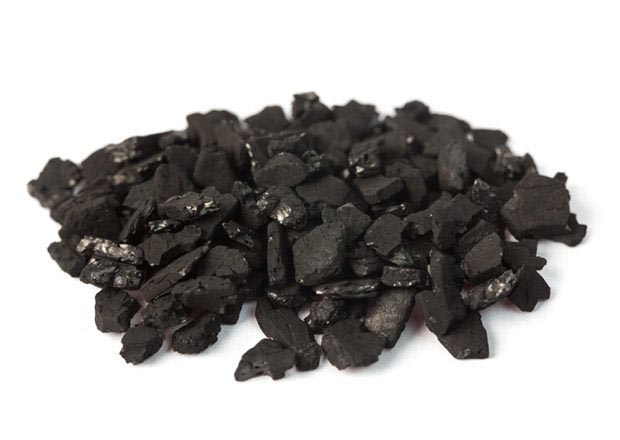
Typical Properties |
Test Method |
|
| Carbon Base | Granular coconut-shell | |
| Activity, CCI4* | 60, 70, or 85% minimum | ASTM D3467 |
| Hardness, ball-pan | 95 minimum | ASTM D3802 |
| Ash content | 5% maximum | ASTM D2866 |
| Apparent density | 0.46 to 0.56 g/ml | ASTM D2854 |
| Surface area* | 1000 m2/g minimum | N2 BET method |
| Moisture content, as packed | 15% to 20.5% | ASTM D2867 |
* Indicates properties of activated carbon prior to impregnation
**Typical density results for 12x20 carbon with a 70% activity level.
| Standard mesh size (US Sieve) | Test method | |
| Molecular Products Inc. designation | Particle size | ASTM D2862 |
| G1 | 4 x 8 | ASTM D2862 |
| G2 | 6 x 12 | ASTM D2862 |
| G3 | 8 x 16 | ASTM D2862 |
| G5 | 20 x 50 | ASTM D2862 |
| G12 | 12 x 20 | ASTM D2862 |
Radioactive Methyl Iodide Removal
High-grade impregnated activated carbon for radioactive methyl iodide removal. Our blended activated carbon filter for the removal of radioactive methyl iodide has an 97% removal efficiency and meets the nuclear regulatory guide 1.52.
The proprietary reagents used to impregnate this activated carbon show a high efficiency in radioactive methyl iodide removal, and contain no heavy metals, such as, copper, lead, or mercury, that could lead to further hazards or harm.
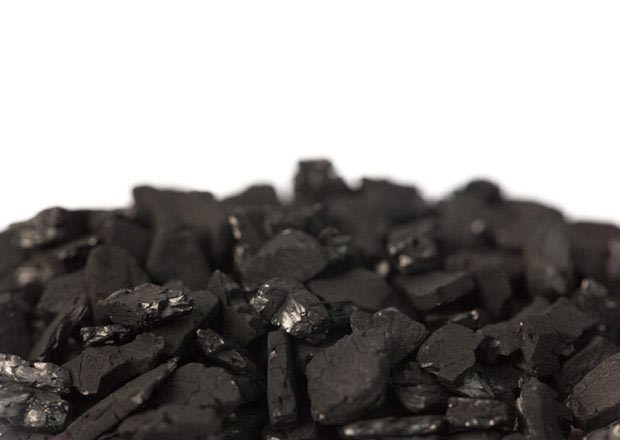
Typical Properties |
Test Method |
|
| Carbon Base | Granular coconut-shell | |
| Activity, CCI4* | 60% | ASTM D3467 |
| Hardness, ball-pan | 95 minimum | ASTM D3802 |
| Ash content | 5% maximum | ASTM D2866 |
| Apparent density | 0.46 to 0.58 g/ml | ASTM D2854 |
| Surface area* | 1000 m2/g minimum | N2 BET method |
| Moisture content, as packed | 13% to 18% | ASTM D2867 |
* Indicates properties of activated carbon prior to impregnation
| Standard mesh size (US Sieve) | Test method | |
| Molecular Products Inc. designation | Particle size | ASTM D2862 |
| G1 | 4 x 8 | ASTM D2862 |
| G2 | 6 x 12 | ASTM D2862 |
| G3 | 8 x 16 | ASTM D2862 |
| G5 | 20 x 50 | ASTM D2862 |
| G12 | 12 x 20 | ASTM D2862 |

 Made in the USA
Made in the USA